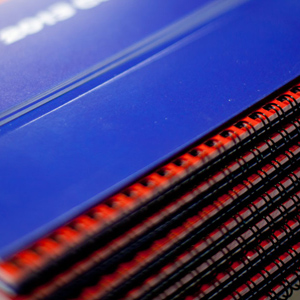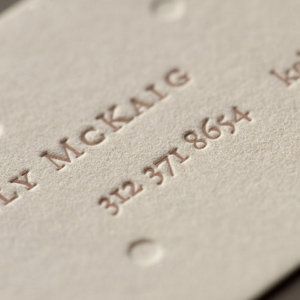Finish Bindery
Mechanical Tipping / Tip On
Also known as tip-on, this process involves mechanically attaching product samples or cards to a printed advertisement using some form of adhesive. Common uses are tipping on products such as business cards, shampoo packs, perfume samples, credit cards and gift cards onto another printed piece.
In-Line Tipping
Mechanical tipping can be done in line while stitching, greatly decreasing the time it takes to complete a job.
Machine Blow-Ins
This is the ability to "blow" or insert a card into a magazine during the stitching process.
Pocket Folders
Folding and gluing a flat printed card stock so that it forms a pouch which can hold a variety of materials such as pamphlets, books, DVD's etc. The thickness of the pouch can be adjusted depending on project requirements. Die cuts can also be made to hold items such as business cards.
Desk Calendars
Cutting and collating pages with a folder backer, punch holes for Cerlox or Wire-O binding, affix Cerlox or Wire-O banding. Folded backer will unfold to produce self-standing calendar.
Calendar Hangers
A wire hangar is inserted into wire binding to allow the calendar to hang on the wall.

Embossing
Pressing a logo or other design into a printed substrate by means a heated die, giving it a raised / 3-dimensional look.
Foil Stamping
The application of a reflective or metallic foil material to another material by using heat and a die. As a result, the foil takes the shape and design of the die from which it was pressed, while adhering to the surface of the other material. There are a wide variety of colors and finishes to choose from.

Numbering
A high-speed method of applying a sequence of numbers to mail pieces using a printing or stamping process.
Clip Sealing
Once a piece of advertising is folded, it's open side can be closed or sealed by means of attaching a sticker. To view the piece, the consumer would open the piece by cutting through the seal.
Post-it Note / Label Application
The process of affixing labels or Post it note to printed pieces. We apply a post it note/label to the front or back of a magazine, they are typically supplied on rolls. (Note: we DO NOT create post it note pads.)
Padding
The process of applying adhesive to the edges of a set of stacked pages so that they hold together but are easily removed. This is usually used for note pads and carbon-less forms (NCR).
Double Sided Taping
An automated way of joining two pieces of material together with two sided tape. In direct mail bindery, this often involves leaving one side of the tape unexposed.
Eyeleting / Stringing
This process involves two steps; punching the hole, and threading the string or wire through it. Typically, a more durable card stock is the material of choice. Optionally, the hole can be reinforced using a brass eyelet, depending on needs.
Indexing
Adding plastic index tabs to pages. The tabs can then be labelled.
Laminating
Sealing a printed piece between two pieces of clear film.
Perforating
This involves adding a perforated edge to a printed piece so that it's easier to tear a portion off.